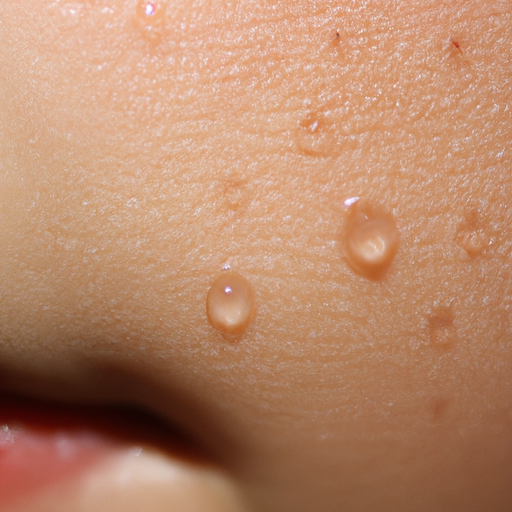As a medical professional, I have encountered countless patients who are troubled by oily skin. The glossy shine, the frequent breakouts, and the constant need to blot away excess oil can be frustrating. However, understanding the causes and symptoms of oily skin can help you manage this condition more effectively.
Firstly, let’s unmask the glossy truth about oily skin. The oil on our skin, also known as sebum, is not inherently bad. In fact, it’s essential for maintaining skin health as it provides a protective layer that keeps the skin moisturized and guards against harmful microorganisms. However, when the sebaceous glands produce excess sebum, it results in oily skin.
The causes of oily skin can be attributed to a variety of factors. Genetics play a significant role; if your parents have oily skin, you are likely to inherit the same skin type. Hormonal changes or imbalances also contribute to increased oil production. For instance, during puberty, pregnancy, or menstrual cycles, fluctuating hormone levels can trigger the sebaceous glands to produce more oil.
Stress is another factor that can exacerbate oily skin. When we are stressed, our bodies produce more androgen hormones, which can lead to more oil production. Additionally, environmental factors such as humidity and heat can stimulate the sebaceous glands, leading to oily skin.
Contrary to popular belief, your skincare routine could also be contributing to your oily skin. Over-washing or using harsh products can strip the skin of its natural oils, causing it to overcompensate by producing more oil. Similarly, using heavy, oil-based products can clog pores and increase oiliness.
Now that we’ve delved into the causes let’s look at the symptoms of oily skin. The most obvious sign is a shiny or greasy appearance. You may also notice larger, more visible pores. Oily skin is also prone to developing comedones (blackheads and whiteheads) and various forms of acne.
In addition, oily skin can feel thick, coarse, or even slightly sticky to the touch. Makeup may not stay on as long and may appear patchy or smudged due to the excess oil.
Understanding the causes and symptoms of oily skin is the first step towards managing it. If you’re struggling with oily skin, it’s crucial to adopt a skincare routine that works for your skin type. This includes using gentle, oil-free products, not over-washing your face, and regularly exfoliating to unclog pores.
It’s also essential to keep yourself hydrated and maintain a healthy diet. Foods high in sugars and fats can stimulate oil production, so opt for a balanced diet rich in fruits, vegetables, lean proteins, and whole grains. Regular exercise can also help regulate hormones and reduce stress, thereby controlling oil production.
If your oily skin is causing distress or leading to severe acne, it’s advisable to consult a dermatologist. They can provide a tailored treatment plan, which may include topical treatments or medication to regulate sebum production.
In conclusion, while oily skin can be challenging to manage, understanding its causes and symptoms can help you take control. Remember, every skin type has its advantages and challenges. Oily skin tends to age slower and develop fewer wrinkles compared to dry skin. So, with the right care and management, you can turn your glossy truth into a glowing reality.




